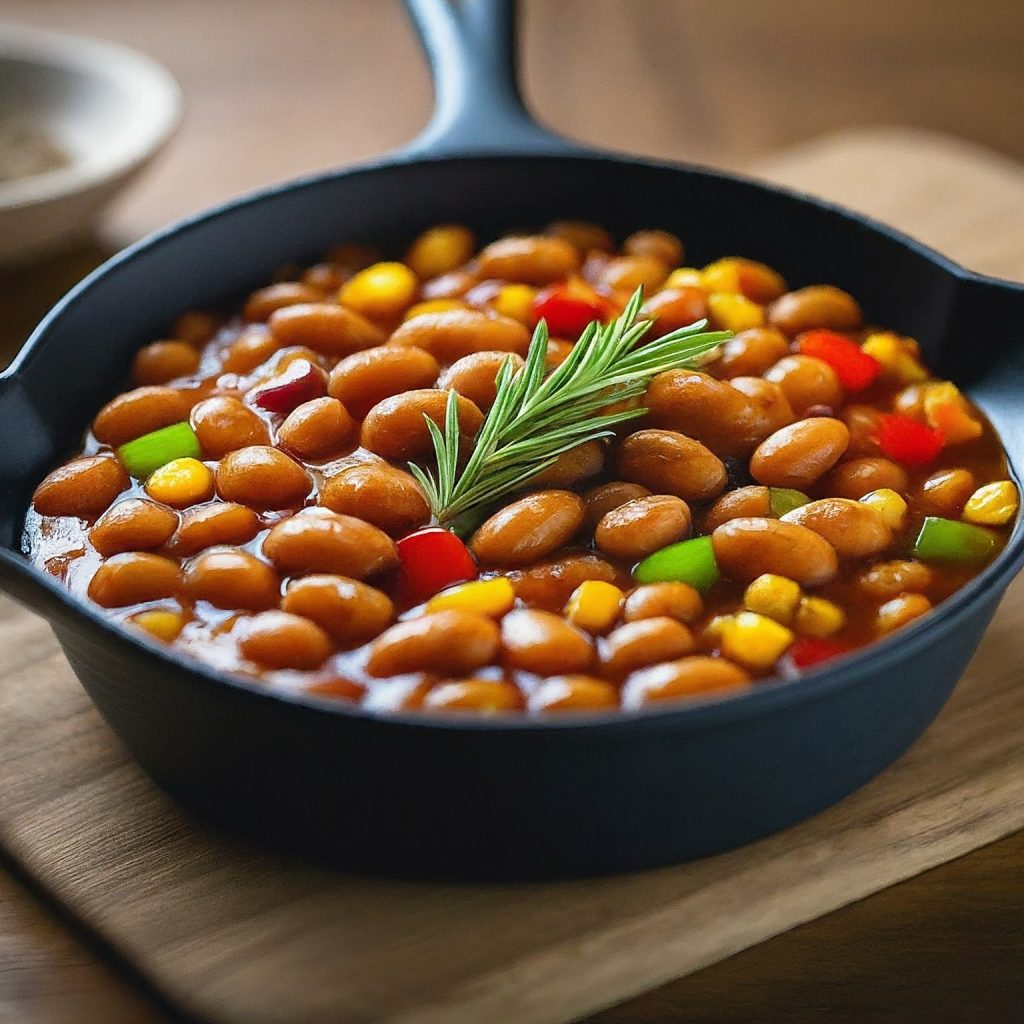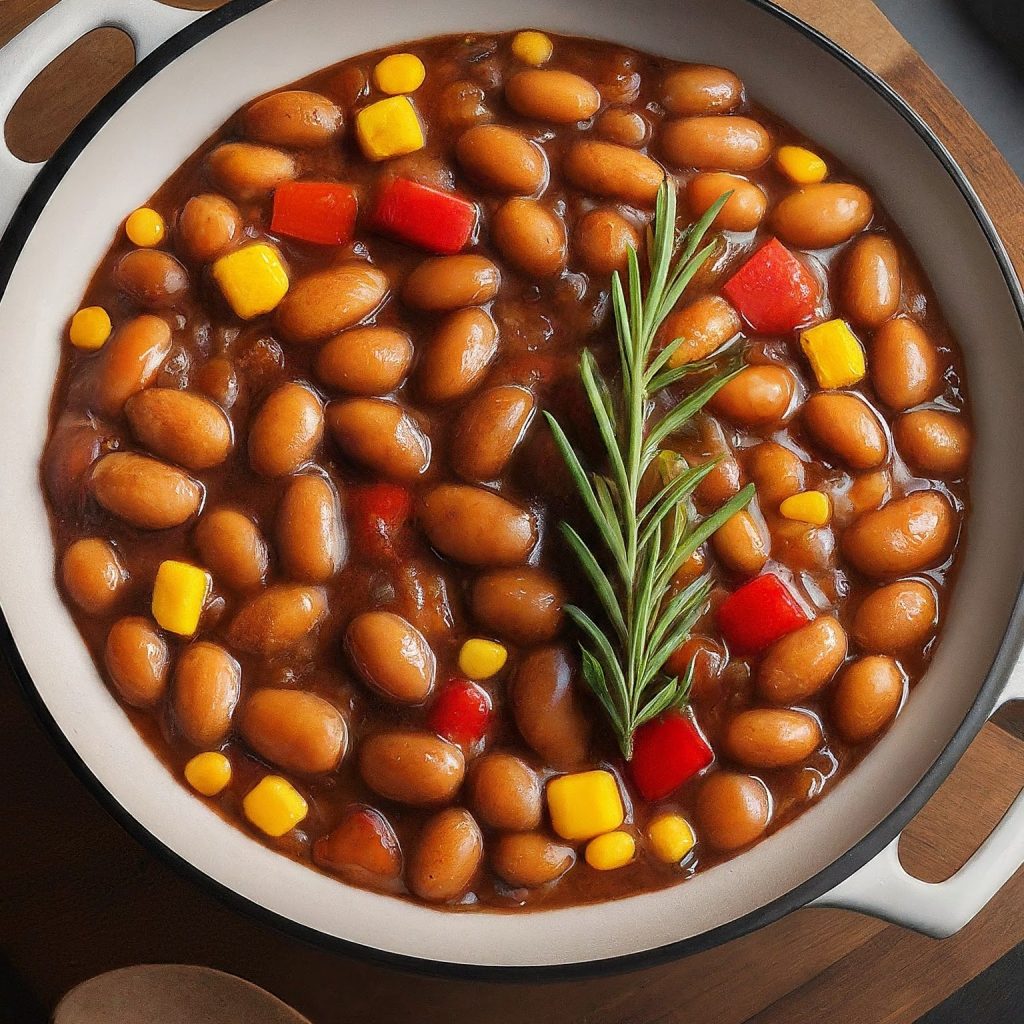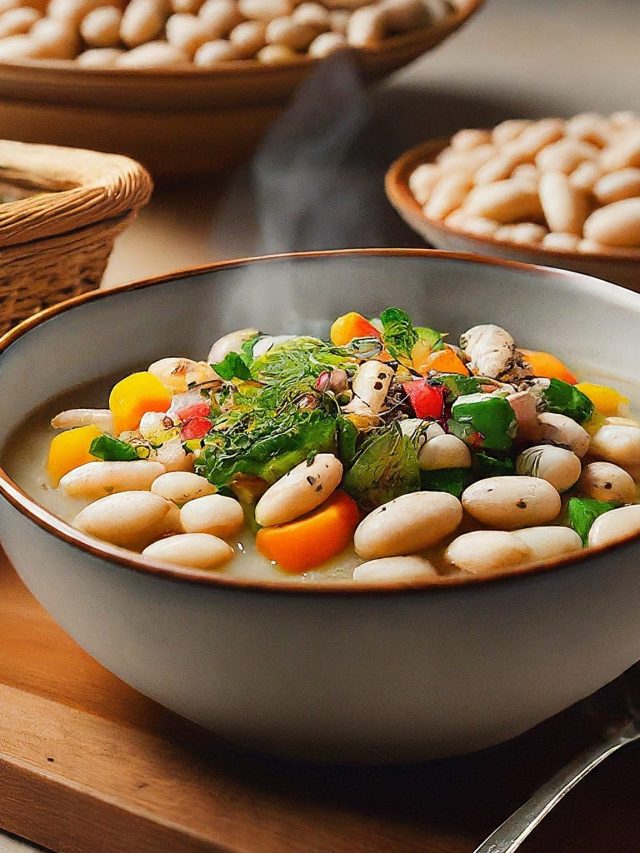Healthy Baked Beans: The Nutritious Staple You Need
Discover the nutritional benefits of healthy baked beans and learn how to incorporate them into your meals. Find easy recipes and expert tips for a delicious and nutritious addition to your diet.
Introduction
What are healthy baked beans? Healthy baked beans are a wholesome and flavorful dish made from beans, typically navy beans, cooked in a savory sauce. Unlike traditional baked beans that are laden with sugar and fats, healthy versions prioritize nutrient-rich ingredients and cooking methods.
Importance of incorporating them into diet Including healthy baked beans in your diet offers a myriad of health benefits. From being a rich source of protein and fiber to being low in fat and calories, they contribute to overall well-being and can be a versatile addition to various meals.
Nutritional Benefits
Protein content One of the standout features of healthy baked beans is their high protein content. Beans are a plant-based source of protein, making them an excellent option for vegetarians and vegans looking to meet their protein needs.
Fiber-rich Healthy baked beans are also packed with fiber, which is essential for digestive health and promoting satiety. A diet high in fiber can aid in weight management and reduce the risk of chronic diseases such as heart disease and diabetes.
Low in fat and calories Compared to traditional baked beans that often contain added fats and sugars, healthy versions are significantly lower in fat and calories. This makes them a guilt-free option for those watching their calorie intake or trying to maintain a healthy weight.
How to Make Healthy Baked Beans
Ingredients To make healthy baked beans, you’ll need:
- Navy beans (or your preferred variety)
- Tomato paste
- Onion
- Garlic
- Spices (such as paprika, cumin, and chili powder)
- Low-sodium vegetable broth
- Optional: maple syrup or honey for sweetness
Step-by-step instructions
- Begin by soaking the beans overnight to soften them and reduce cooking time.
- In a large pot, sauté diced onions and minced garlic until fragrant.
- Add the soaked beans, tomato paste, spices, and vegetable broth to the pot.
- Simmer the mixture over low heat until the beans are tender and the sauce has thickened.
- Adjust seasoning to taste and serve hot.
Tips for healthier versions
- Use low-sodium vegetable broth to control the salt content.
- Opt for natural sweeteners like maple syrup or honey instead of refined sugars.
- Experiment with different spice blends to customize the flavor to your liking.
Variations and Flavors
Vegetarian options For those following a vegetarian or vegan diet, healthy baked beans are an excellent source of plant-based protein. You can customize the recipe with your favorite vegetables or add tofu for extra protein.
Flavor profiles Healthy baked beans can be tailored to suit a variety of flavor preferences. Whether you prefer a smoky barbecue flavor or a spicy kick, there are endless possibilities for seasoning and spices.
Sweet vs. savory While traditional baked beans are known for their sweet molasses flavor, healthy versions offer a balance of sweetness and savory notes. Experiment with different sweeteners and seasonings to find your perfect combination.
Incorporating into Meals
Breakfast Start your day off right by adding healthy baked beans to your breakfast routine. Serve them alongside scrambled eggs and whole-grain toast for a protein-packed morning meal.
Lunch and dinner Healthy baked beans make a satisfying main or side dish for lunch and dinner. Pair them with grilled vegetables and brown rice for a nutritious vegetarian meal, or serve them alongside grilled chicken or fish for added protein.
Snack options For a wholesome snack, try spreading healthy baked beans on whole-grain crackers or toast. You can also use them as a filling for stuffed baked potatoes or quesadillas for a quick and easy snack.
Health Considerations
Allergies and dietary restrictions While beans are naturally gluten-free and suitable for most dietary preferences, it’s essential to check labels for any potential allergens or added ingredients that may not align with your dietary needs.
Sodium content Be mindful of the sodium content in canned baked beans, as some varieties can be high in salt. Opt for low-sodium or no-salt-added options when possible, or make your own healthy baked beans at home to control the amount of salt added.
Impact on blood sugar levels Despite being a source of carbohydrates, beans have a relatively low glycemic index, meaning they cause a slower and steadier rise in blood sugar levels compared to refined carbohydrates. However, if you have diabetes or are watching your blood sugar levels, it’s essential to monitor your portion sizes and choose healthy accompaniments to balance your meal.
FAQs about Healthy Baked Beans
Are baked beans a good source of protein? Yes, baked beans are an excellent source of plant-based protein, making them a valuable addition to vegetarian and vegan diets.
Can I make baked beans without added sugar? Absolutely! You can sweeten healthy baked beans naturally with ingredients like maple syrup or honey instead of refined sugars.
How long can I store homemade baked beans? Homemade baked beans can be stored in an airtight container in the refrigerator for up to 4-5 days. Alternatively, you can freeze them for longer storage.
The Savory Charm of Baked Beans: A Homestyle Delight
Indulge in the heartwarming flavors of the classic baked beans recipe. Learn how to create this comforting dish from scratch, perfect for any occasion.
Introduction:
Baked beans, a beloved staple in many households, evoke memories of cozy family gatherings and summertime barbecues. This timeless dish combines simplicity with robust flavors, making it a favorite among all ages. In this comprehensive guide, we’ll delve into the art of crafting the perfect batch of baked beans, exploring variations, tips, and FAQs to ensure your culinary success.
Exploring the Origins of Baked Beans:
Unraveling the Culinary Heritage
Baked beans have a rich history dating back centuries, with roots tracing to Native American and colonial cooking traditions.
Baked beans gained popularity in the United States during the 19th century, becoming a quintessential comfort food cherished for its affordability and nourishing qualities.
Modern Evolution and Regional Variations
Over time, baked beans recipes have evolved, with each region infusing its unique twist. From the tangy molasses-laden beans of New England to the smoky, bacon-infused versions of the South, there’s a flavor profile to suit every palate.
Unlocking the Secrets of the Perfect Baked Beans Recipe:
Gathering Your Ingredients
Before diving into the cooking process, assemble high-quality ingredients, including navy beans, molasses, brown sugar, mustard, onions, and bacon or salt pork.
Preparing the Beans
Begin by soaking the navy beans overnight to ensure tenderness and reduce cooking time. Rinse the beans thoroughly before proceeding to the next step.
Infusing Flavor with Slow Cooking
The key to exceptional baked beans lies in slow cooking. Allow the beans to simmer gently, absorbing the savory essence of the accompanying ingredients.
Achieving the Perfect Balance of Sweet and Tangy
Balancing sweetness and tanginess is paramount in a stellar baked beans recipe. Experiment with varying ratios of molasses, brown sugar, and mustard until you achieve the ideal flavor profile.
Enhancing with Additional Ingredients
Elevate your baked beans with additional ingredients such as diced onions, bell peppers, or jalapeños for a burst of color and flavor.
Finishing Touches
Once the beans reach a tender consistency and the sauce thickens to perfection, it’s time to remove them from the oven. Allow the dish to cool slightly before serving, allowing the flavors to meld.
FAQs (Frequently Asked Questions):
- How do I store leftover baked beans? Leftover baked beans can be stored in an airtight container in the refrigerator for up to five days. Simply reheat them on the stovetop or in the microwave before serving.
- Can I use different types of beans in the recipe? While navy beans are traditionally used in baked beans recipes, you can experiment with other varieties such as kidney beans or pinto beans for a unique twist.
- What can I serve with baked beans? Baked beans complement a variety of dishes, including grilled meats, cornbread, coleslaw, and baked potatoes, making them a versatile addition to any meal.
- Can I make baked beans vegetarian-friendly? Absolutely! Simply omit the bacon or salt pork and use vegetable broth instead of water for a delicious vegetarian version of this classic dish.
- How can I adjust the sweetness level of the baked beans? To adjust the sweetness level, simply increase or decrease the amount of brown sugar or molasses according to your preference. Taste the sauce as you go and adjust accordingly.
- Can I freeze baked beans? Yes, you can freeze baked beans for future enjoyment. Allow the dish to cool completely before transferring it to freezer-safe containers. They can be stored in the freezer for up to three months.
Conclusion:
In conclusion, mastering the art of baked beans opens the door to a world of comforting flavors and cherished memories. Whether enjoyed as a side dish at a backyard barbecue or the star of a cozy family dinner, this humble recipe never fails to delight. With a bit of patience and creativity, you can create your own signature version of this beloved classic.






